For some, Gyrotonic® may as well be the name of some obscure Greek cocktail, not the unusual physical practice that it is. Any teacher of the Gyrotonic Expansion System knows how difficult it is to convey in words what Gyrotonic is and what it offers to someone who has never experienced it. I’ve heard teachers describe it as ‘circular-Pilates’ or, ‘yoga without the poses,’ even I resort to this terminology for brevity’s sake. But, the true definition of Gyrotonic is much more complex. The medium through which Gyrotonic is delivered is similar to that of Pilates in that there are large pieces of specialized apparatuses on which a practitioner can take private sessions with a certified teacher, or use independently. There is even a mat version of the practice, known as Gyrokinesis, which excludes the use of equipment.
Gyrotonic is a progressive body conditioning system created by Juliu Horvath, which employs key principles of swimming, ballet, gymnastics, qi gong, and yoga to work the body in a circular, integrated manner. What’s unique about Gyrotonic and what makes it so challenging is the three-dimensional movement it employs. Many people used to linear exercise systems find it daunting at first because of how much more awareness is required and how little control is initially felt over the body. In addition to the three-dimensionality, the movement is coordinated in rhythm with specific breathing techniques. The combination of these three principles—3D movement, rhythm, and breath—stimulates the nervous system and the lymphatic system, and strengthens the brain’s connection to the body. The emphasis on nerve strength as well as a strong and flexible spine is wonderful for everybody, but can be particularly beneficial for those suffering from neuromuscular disorders and scoliosis.
As an introduction to the system we’ve chosen four exercises which most have seen before: a lunge, a spine stretch, a plank, and a reverse plank. With the addition of circular movement, rhythm, and breath, Gyrotonic turns these simple forms into complex exercises in coordination, equilibrium, and focus, which serve to greatly increase understanding of how the body moves. These exercises are meant to give you an introduction to Gyrotonic and a little taste of the dynamics of the system.
Related: 6 Yoga-Inspired Moves to Help You Run Injury-Free
Backward Lunges
Start with the left foot standing on the padded platform, with the ball of the right foot on one disc of the propellor. Feel the whole body over the standing leg by reaching one line through the sole of the foot to the crown of the head. Keep stretching that line as weight moves into the right foot and reach the right heel back.
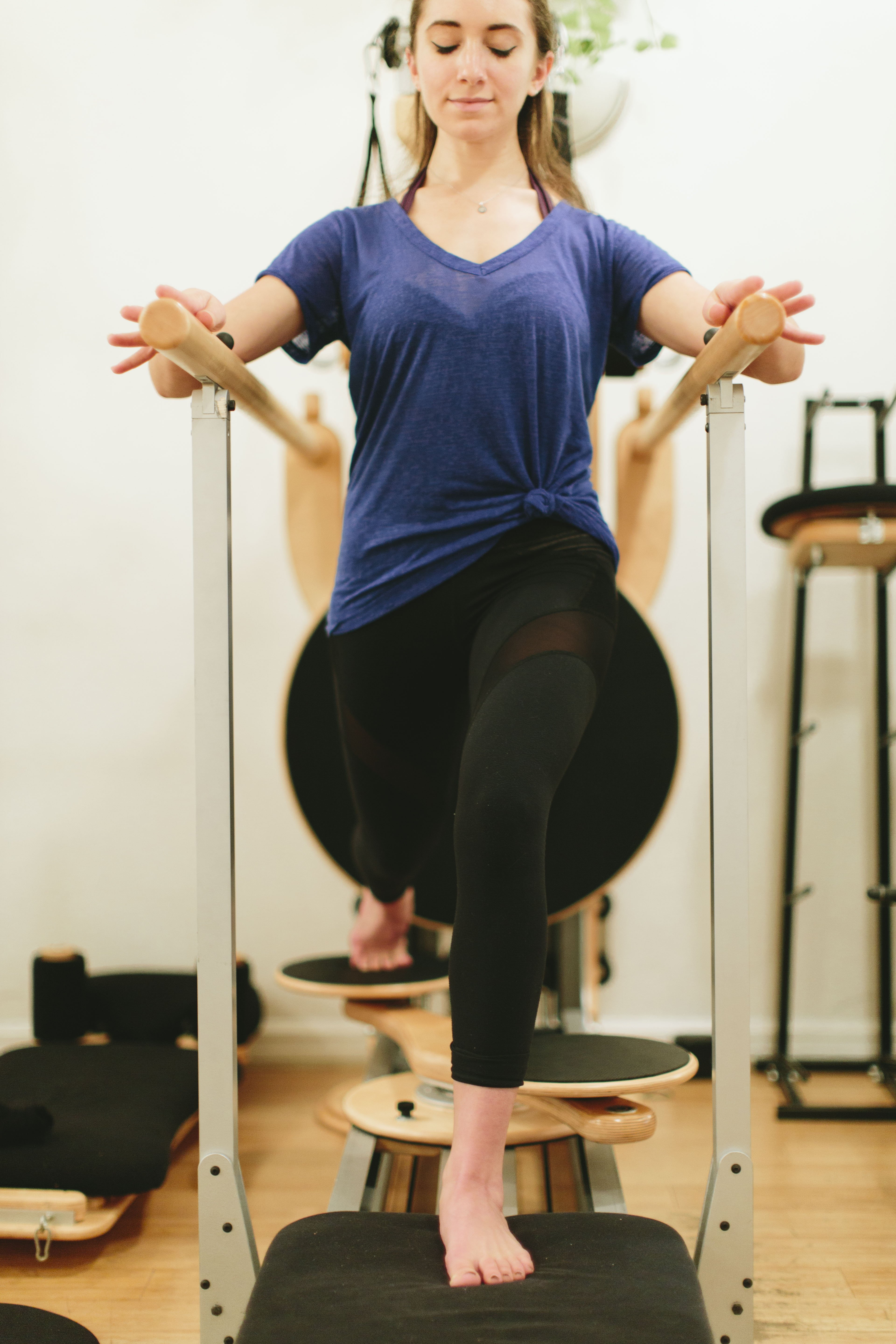 As you travel back, the head stays over the pelvis the whole time, the back knee is bent and heavy. Hips stay square. To come back to a straight standing leg, press through the sole of the left foot. As much as you press down through the foot reach up with the crown of your head. Exhale as you lunge back, inhale as you come to stand.
As you travel back, the head stays over the pelvis the whole time, the back knee is bent and heavy. Hips stay square. To come back to a straight standing leg, press through the sole of the left foot. As much as you press down through the foot reach up with the crown of your head. Exhale as you lunge back, inhale as you come to stand.
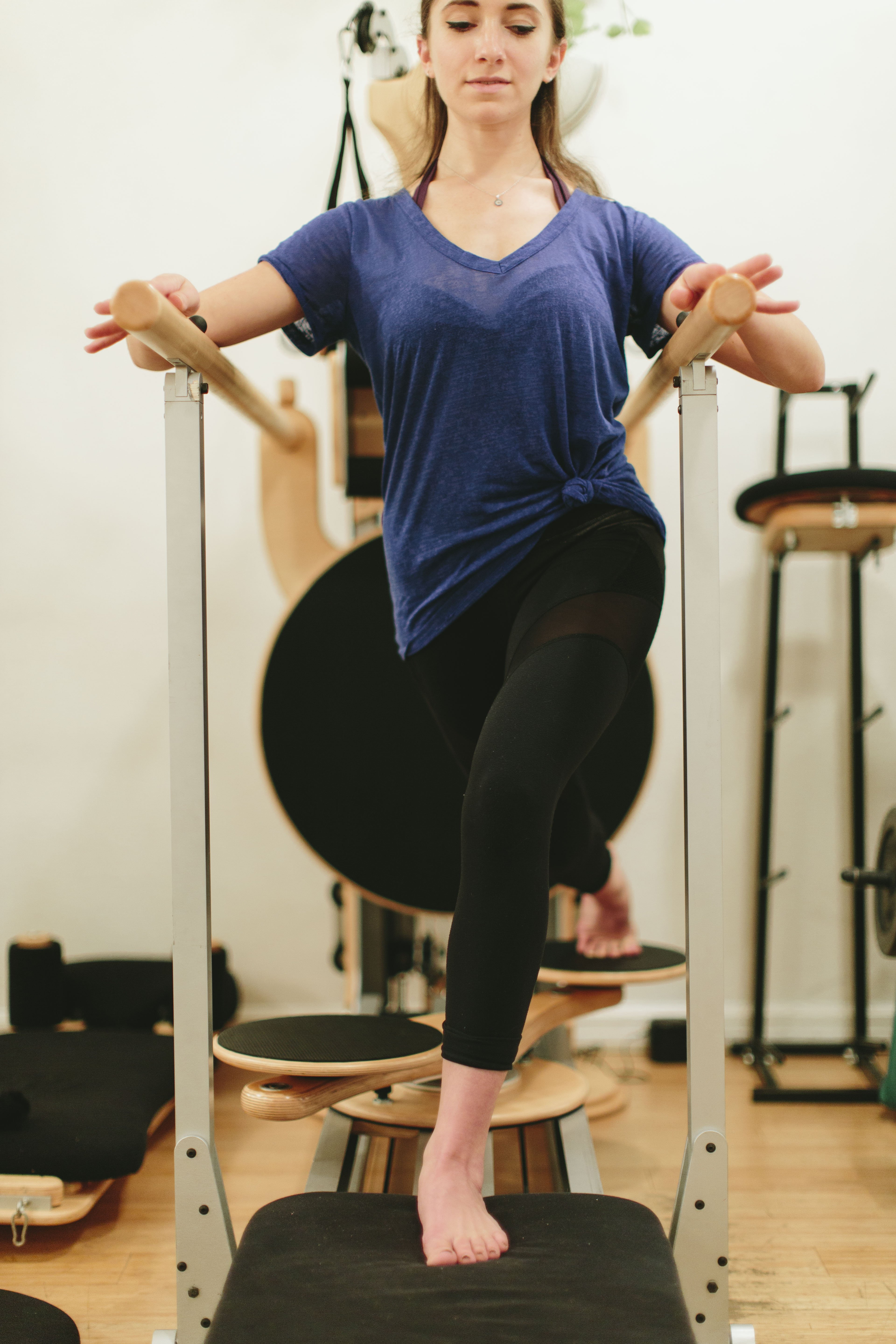
Do four repetitions turning the propellor in one direction and four repetitions in the other direction, switch legs and repeat.
For a more advanced version, scoop the front up and back and send the head back with the back foot to come into a lunging backbend.
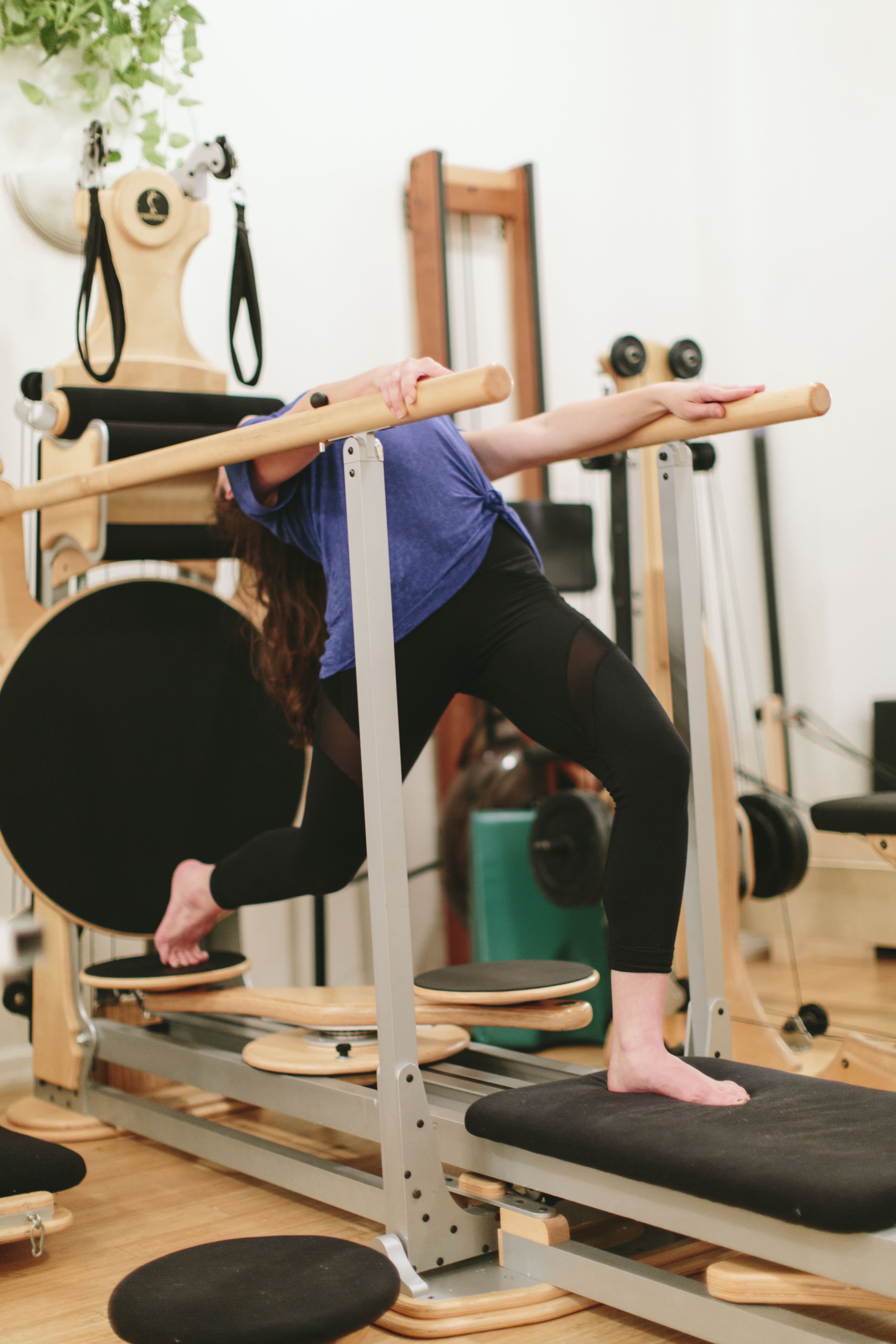 The foot and the head need to be coordinated and sent back at the same time otherwise the body will not be in balance and the exercise will feel uncomfortable.
The foot and the head need to be coordinated and sent back at the same time otherwise the body will not be in balance and the exercise will feel uncomfortable.
Cat Backs
These are similar to the kneeling Cat-Cow Pose, in which you alternate between an arched and curled spine. Start kneeling on the platform with both hands on one disc of the propellor. Flex your feet and bring your toes underneath you, arch the pelvis by reaching the sitz bones back. Put weight into your hands and press your shoulder blades down to reach the chest up. The pelvis continues to reach back as your chest and arms reach forward.
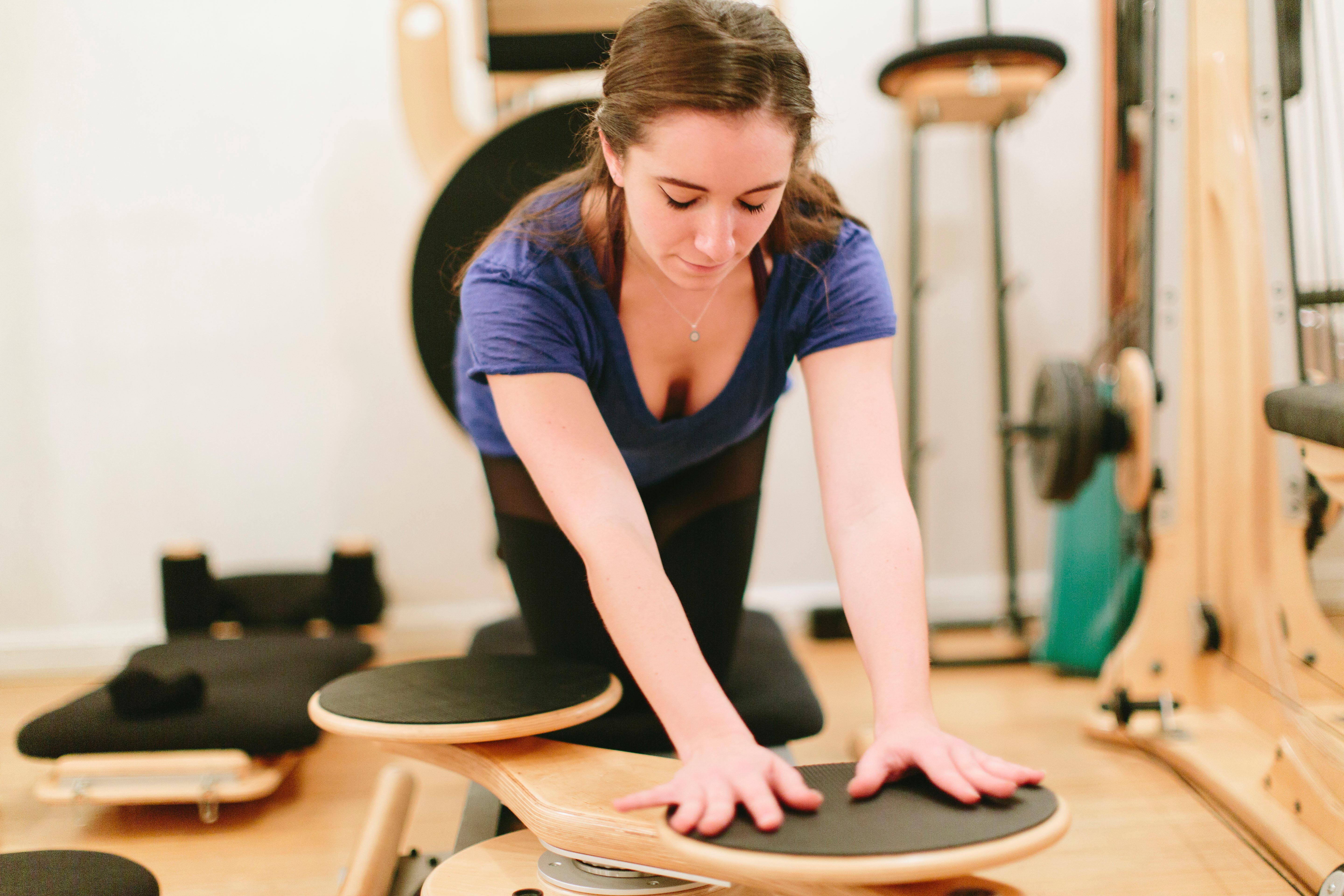
To curl back, point your feet and press your shins down. Ripple through the lower, middle, and upper back. You want to articulate each vertebrae one by one. Exhale as you arch forward, inhale as you curl. Do four repetitions in one direction and four in the other; repeat.
Planks
Love them or hate them, we all know them. Planks are a powerful strengthening exercise, but holding a plank if your body isn’t balanced can create pretty bad tension in the shoulders, neck, low back, and hip flexors. The Gyrotonic propellor plank require full-body strength and flexibility and is an advanced exercise. If the body isn’t ready it could strain the low back.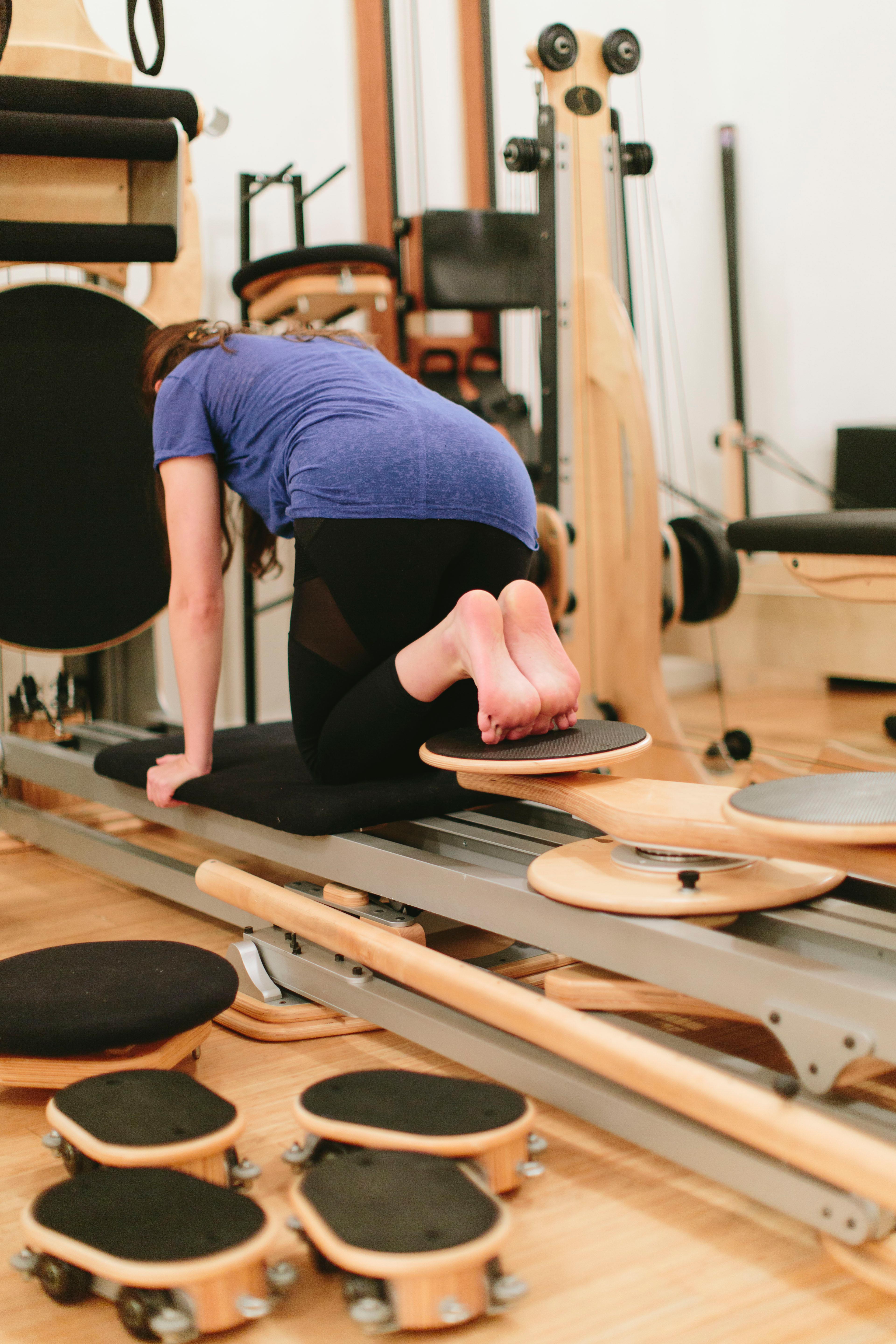
Start kneeling facing away from the propellor with the balls of your feet on one of the discs. Grasp the edges of the padded platform. Look down at your knees and with a strong exhale lift and curl the lower belly until your knees are hovering an inch off the platform.
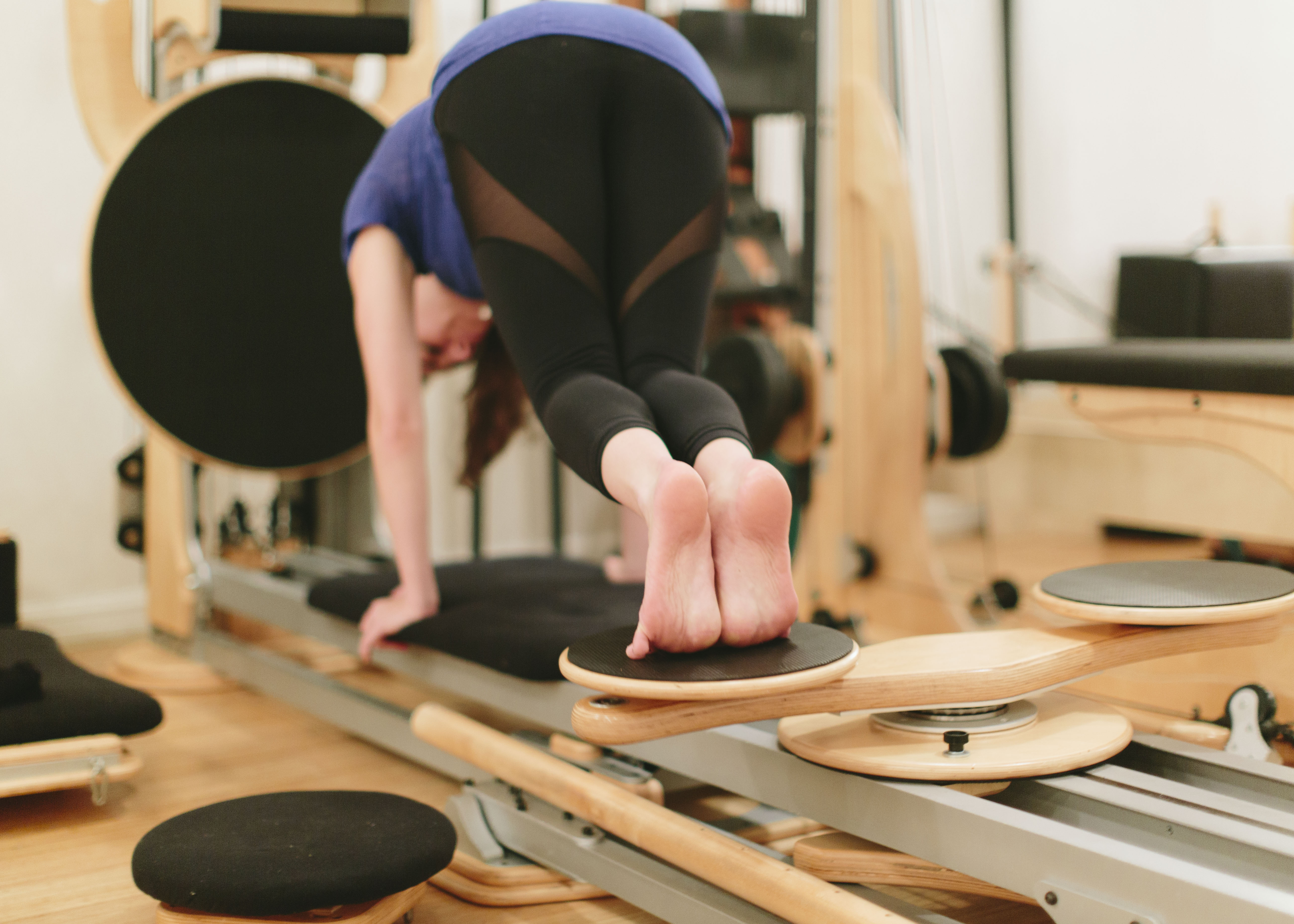 Reach the crown of your head and your heels strongly away from each other to extend the body into a long plank. The pelvis is pulled up in the front and the chest is reaching forward.
Reach the crown of your head and your heels strongly away from each other to extend the body into a long plank. The pelvis is pulled up in the front and the chest is reaching forward.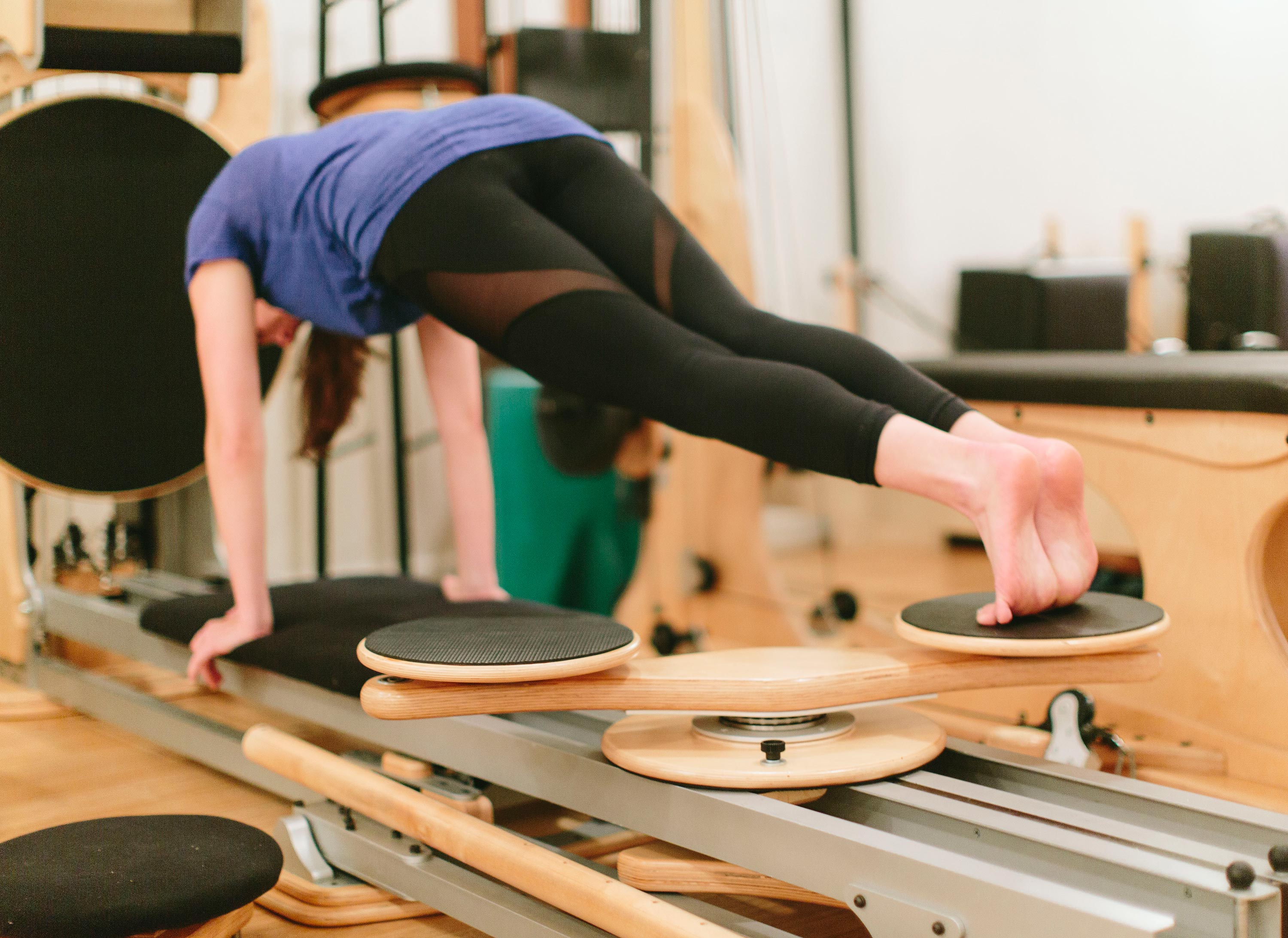 The hamstrings and the psoas (the two long muscles that stretch from the lumbar spine to the inner thigh) are in a lengthened contraction. If you reach enough in both directions the fully extended plank will feel “suspended” and easy.
The hamstrings and the psoas (the two long muscles that stretch from the lumbar spine to the inner thigh) are in a lengthened contraction. If you reach enough in both directions the fully extended plank will feel “suspended” and easy.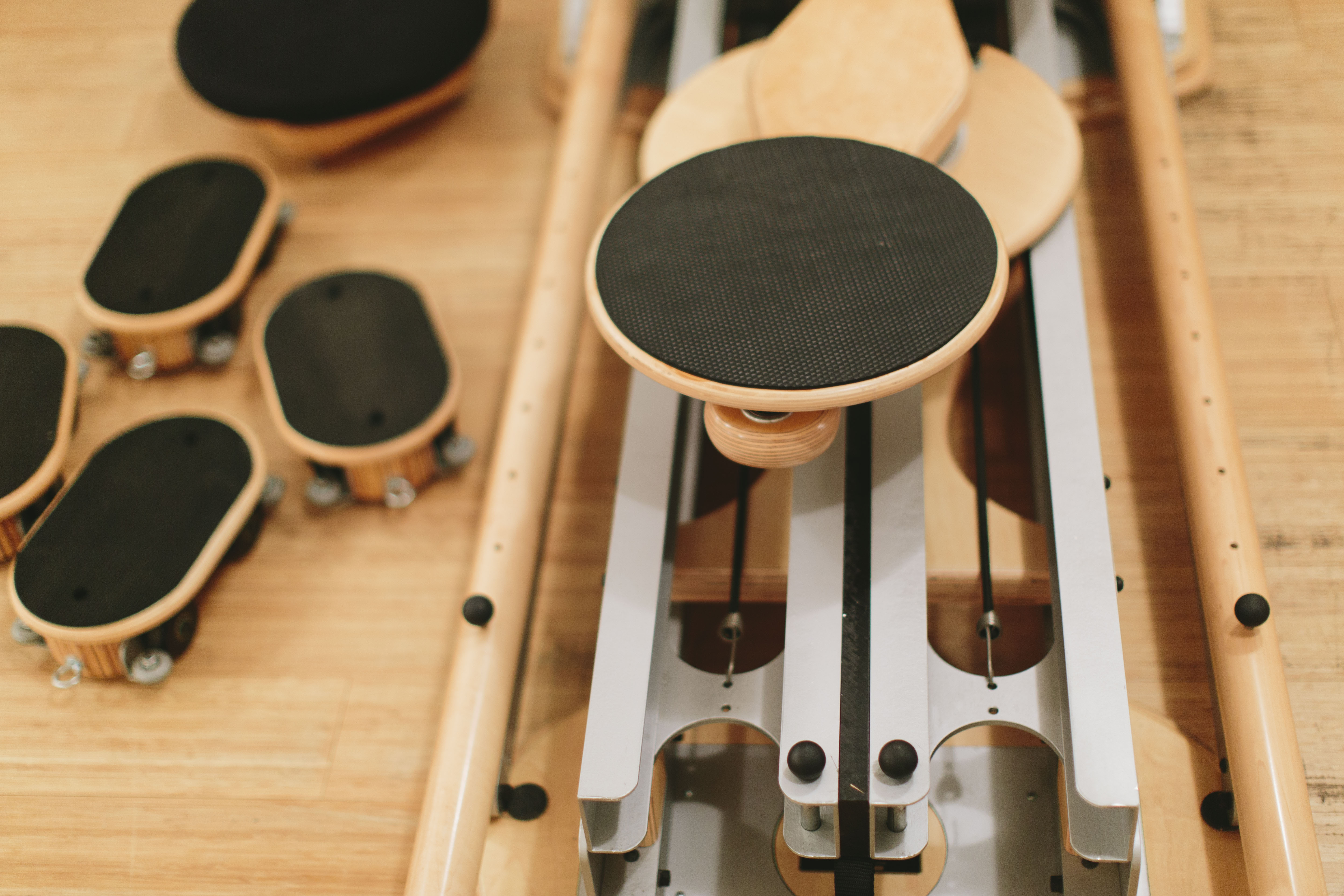
To bring the disc back, lengthen the spine longer to curl and drag the feet in. The pelvis stays low as you curl. It’s your long curled spine that pulls the feet in, not the hips.
 Take a big squeezing exhalation to come into the plank, and a small inhalation to curl. Repeat four times in one direction, and then four in the other; if you have it in you, repeat.
Take a big squeezing exhalation to come into the plank, and a small inhalation to curl. Repeat four times in one direction, and then four in the other; if you have it in you, repeat.
Related: A Core-Strengthening Yoga Sequence
Reverse Planks
Start seated on the platform with hands grasping the sides, soles of the feet on one propellor disc.
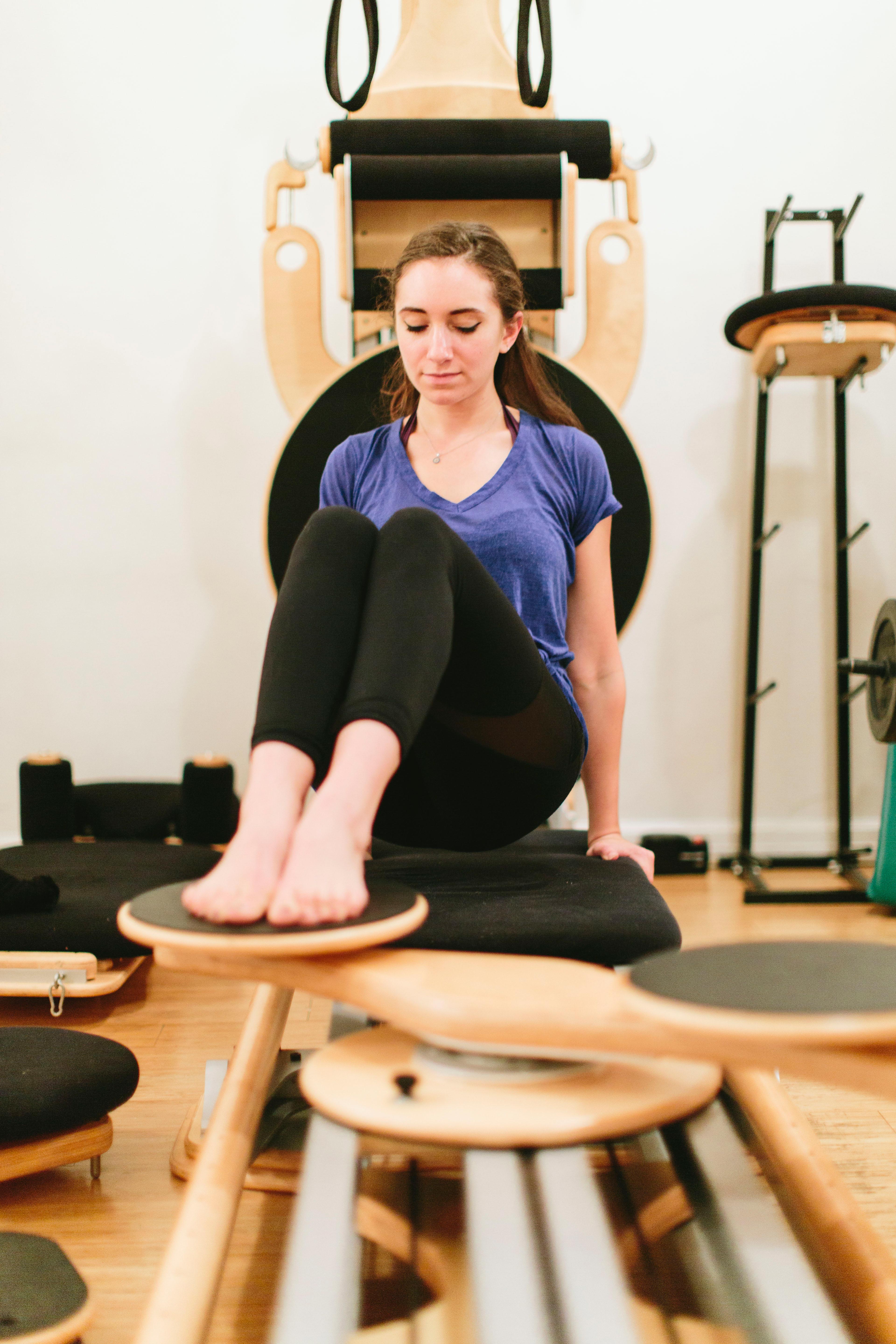 With an exhalation and one swift motion reach the feet and the chest in opposite directions to a full plank where the legs are straight and the body forms a line.
With an exhalation and one swift motion reach the feet and the chest in opposite directions to a full plank where the legs are straight and the body forms a line.
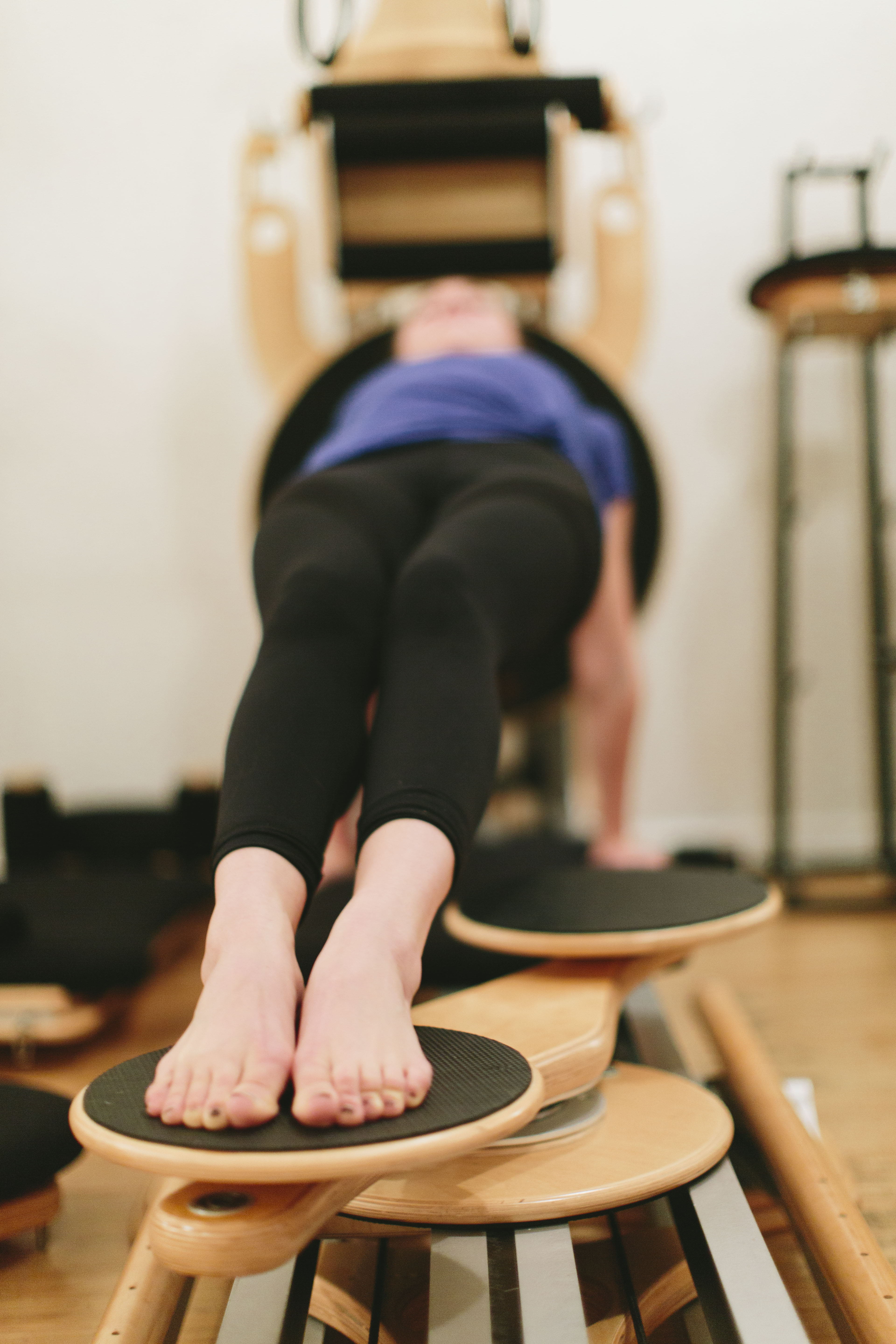 The sacrum should be supported and pushing forward. The distance between your hands and the propellor is important, you should position yourself so that when you’re fully extended in the plank the feet are just able to reach around the edge, like a rolling ball just making it over a hill. To come in, inhale, bend the knees, and reach the crown of the head up.
The sacrum should be supported and pushing forward. The distance between your hands and the propellor is important, you should position yourself so that when you’re fully extended in the plank the feet are just able to reach around the edge, like a rolling ball just making it over a hill. To come in, inhale, bend the knees, and reach the crown of the head up.
Photos by Hailey Wist
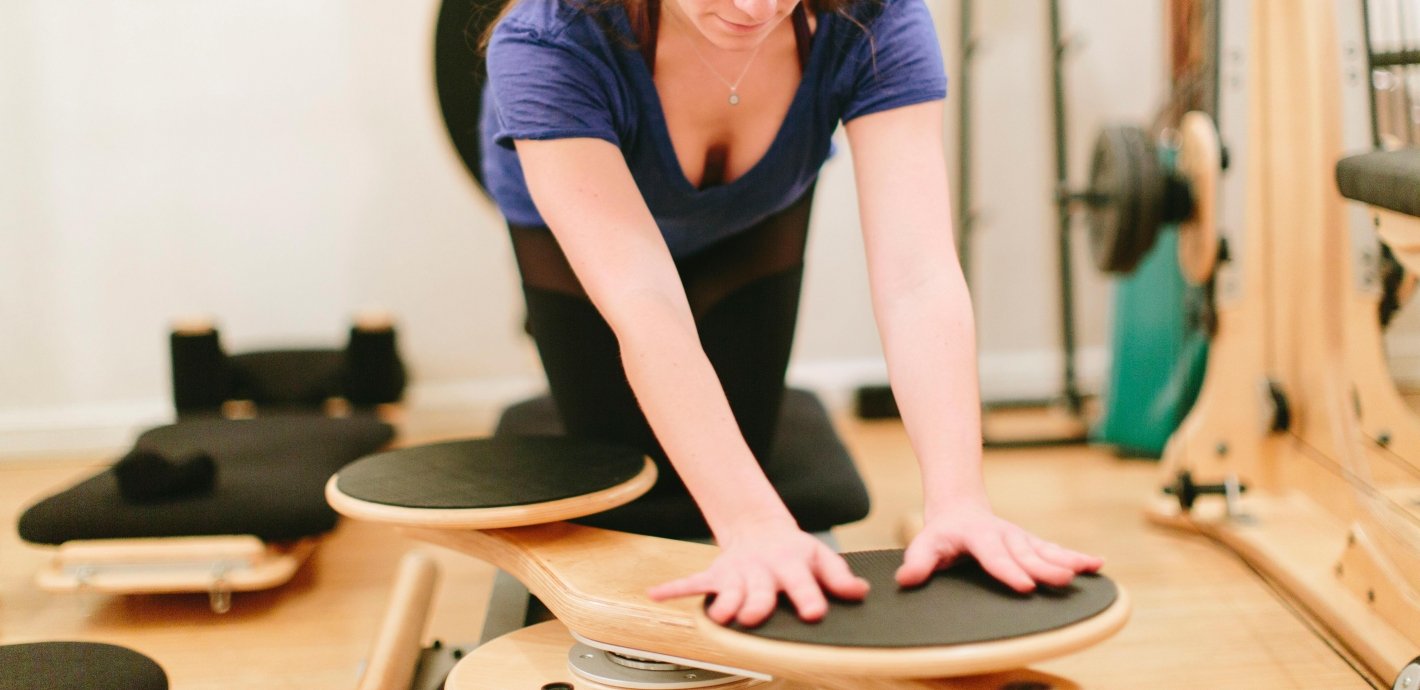

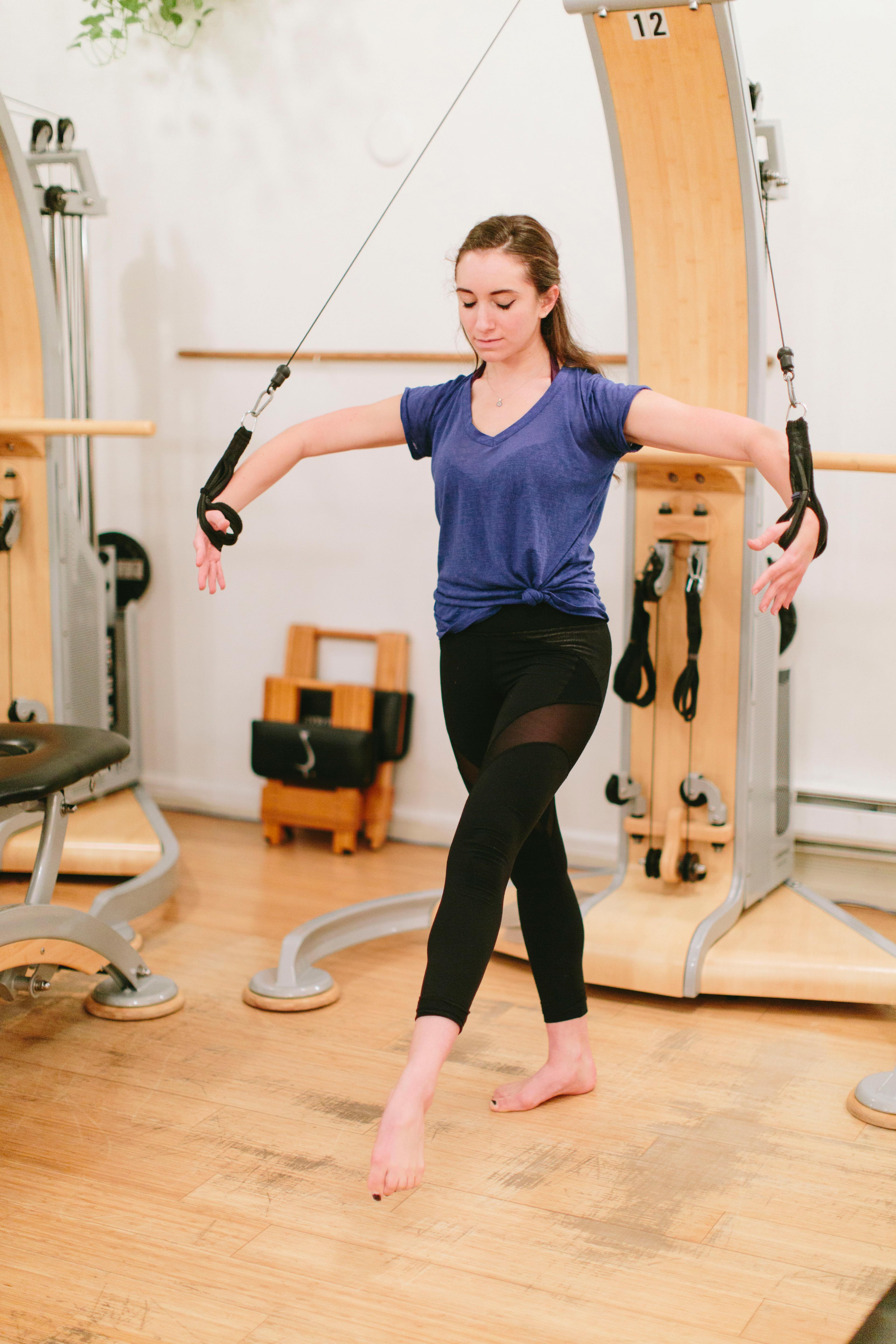
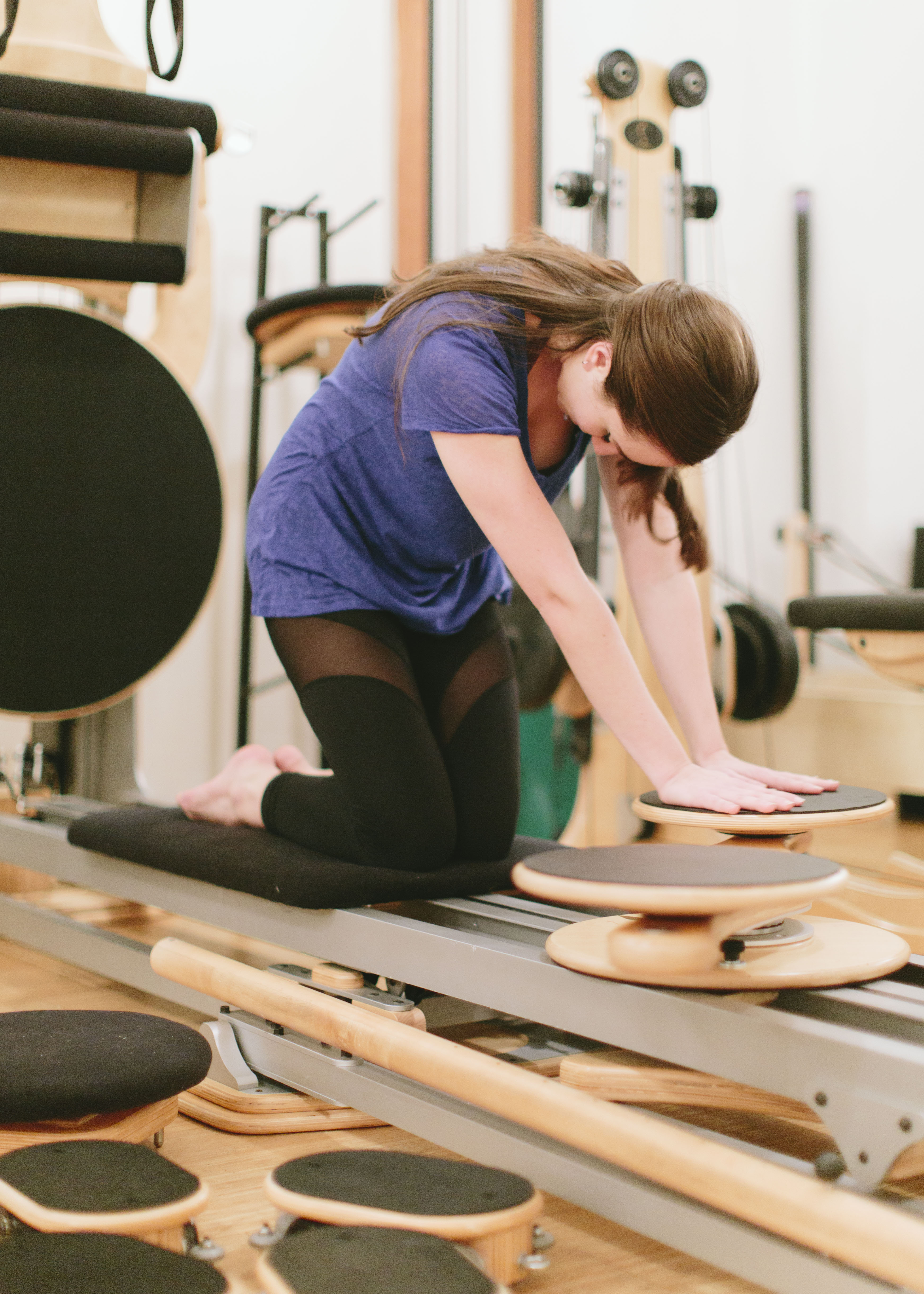
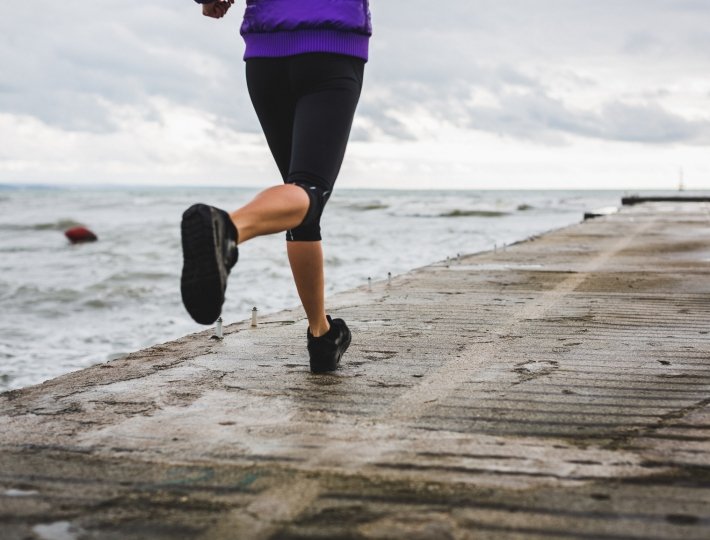
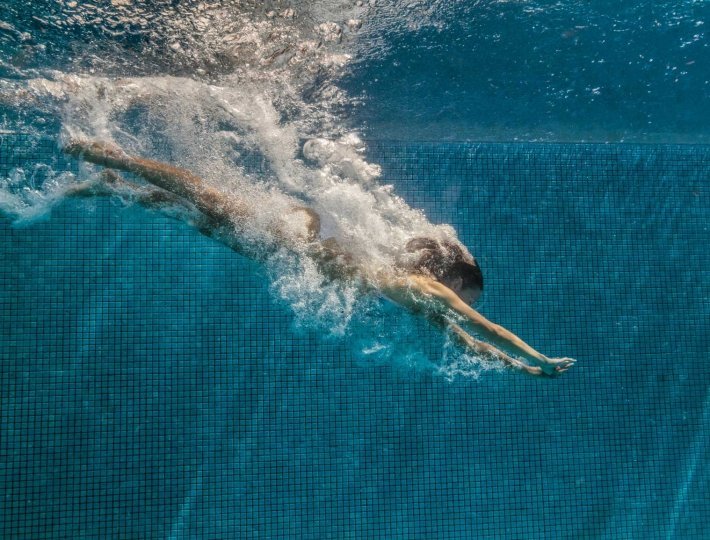
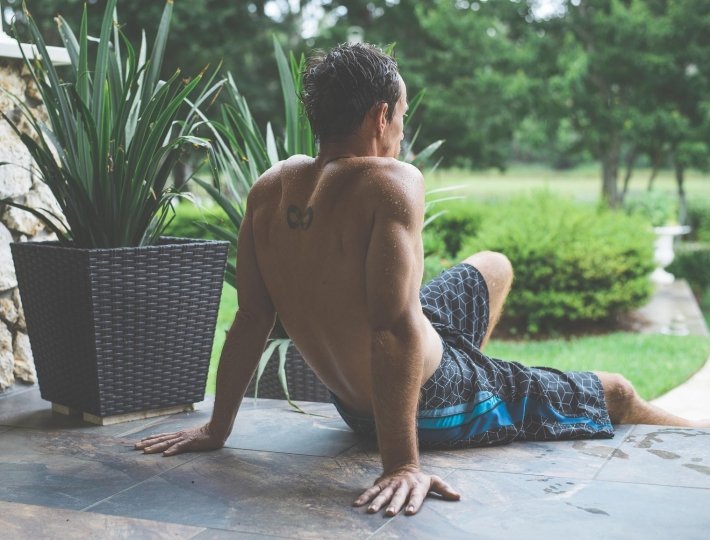
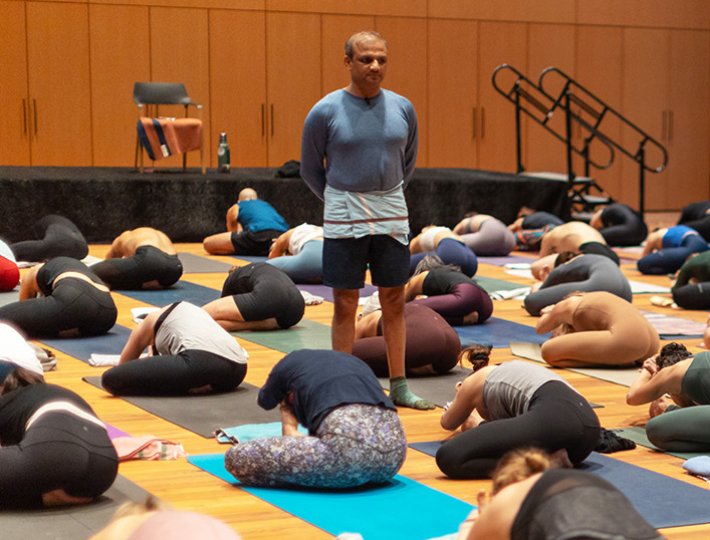
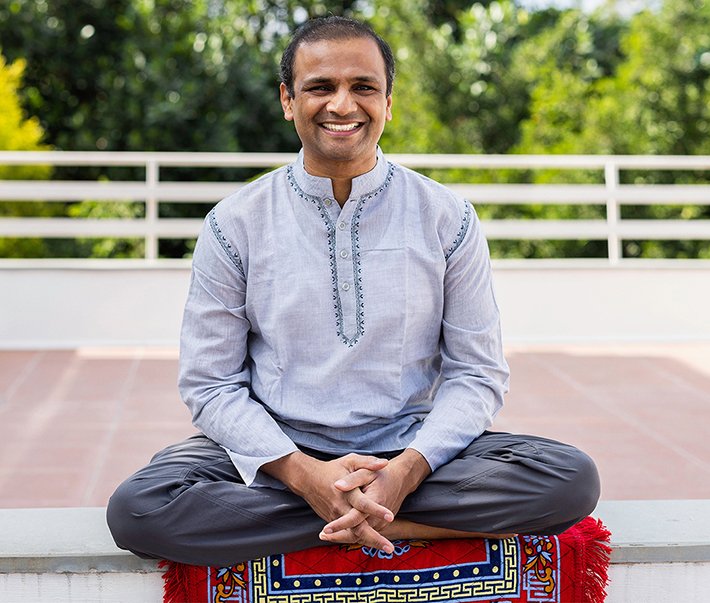
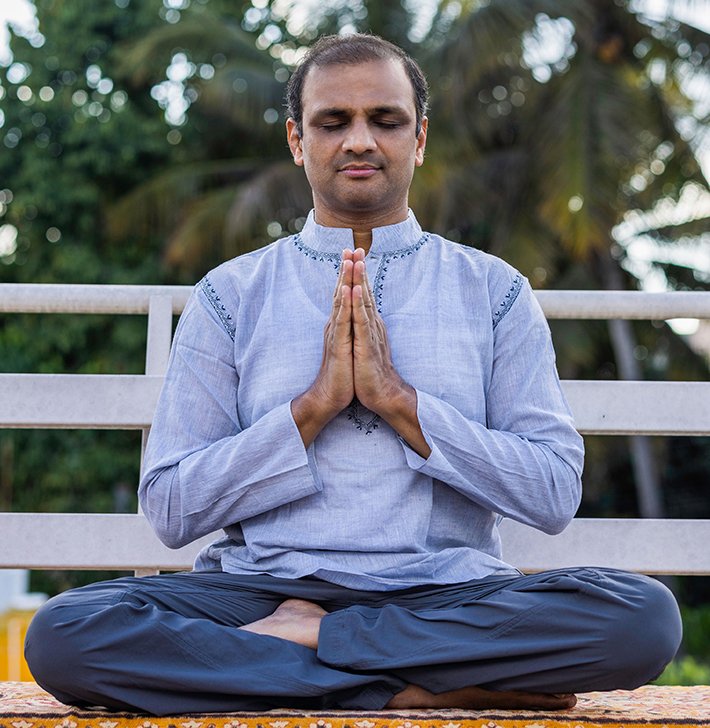



Comments (0)